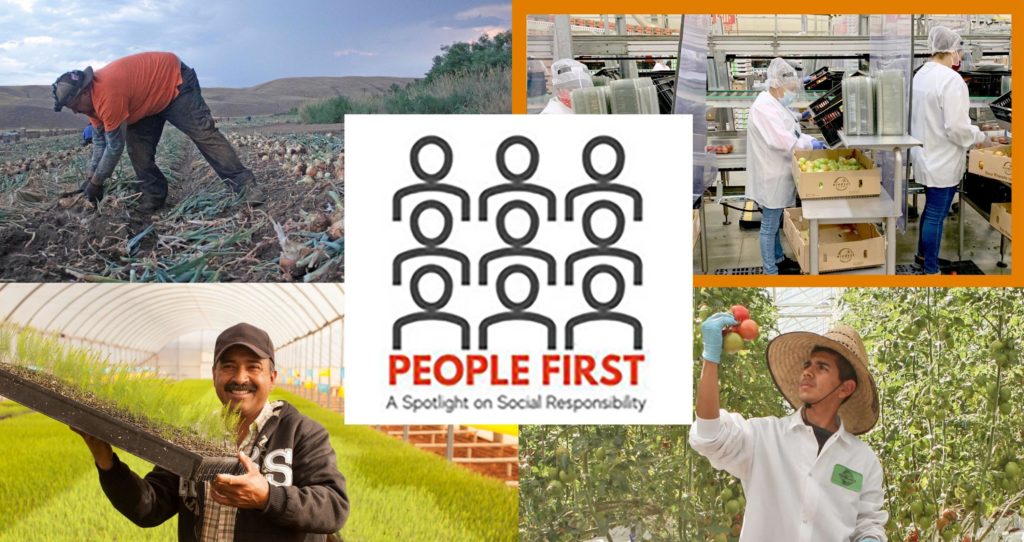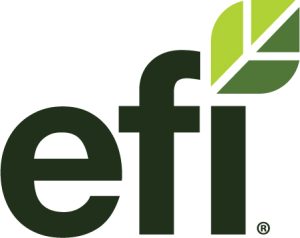How to Navigate the H-2A Program to Assure an Ethical Labor Supply Chain

In the second webinar of the 2022 People First series presented by The Packer and Equitable Food Initiative (EFI), AgSocio Co-founder and General Manager Matt Rogers, CIERTO Global H-2A Program Director Norma Encinas and EFI Managing Director Kenton Harmer discuss the risks, challenges and benefits of participating in the H-2A program. Their conversation provides a comprehensive overview of how to recruit and integrate guest and H-2A visa workers into your workforce, including how to get started, critical recruitment risks to avoid and how investing in clean recruitment will show up in your operation, starting with food safety.



Watch the full webinar on demand.
The Nuts and Bolts of Participating in the H-2A Program
Recruiting workers through the H-2A program is a complicated process that involves navigating a bureaucratic maze with multiple steps, forms and agencies on a tight timeline. Getting started for the first time or reevaluating the way your company approaches participating in the program can be overwhelming.

In the first 15 minutes of the Solving Labor and Recruitment Challenges webinar, Encinas gives an overview of the steps involved in applying for the H-2A program and provides details about the required forms, roles of the facilitating agencies, and responsibilities and requirements of the applying grower or farm labor contractor.
Watch the webinar to get the complete program overview (minutes 2:00-17:00), summary of costs involved (minutes 50:45-53:45) and thoughts on how to properly vet applicants (minutes 54:00-55:00).
Did You Know?
- The entire H-2A application process takes place in just three to four months, as the first step cannot take place until 60 to 75 days before the date workers are needed.
- Growers providing free housing for H-2A guest workers are also required to provide free housing for U.S. corresponding workers who can not reasonably commute to and from work on a daily basis.
- During the application process, thoroughly vetting applicants in preparation for the U.S. Consulate appointments is one way to avoid delays and holdups.
- Data from a recent EFI joint study with CIERTO Global and &Wider revealed that illegal recruitment fees sometimes charged to workers by recruiters, farm labor contractors or subcontractors can be thousands or tens of thousands of dollars.
Who’s Responsible for Recruitment Risks?
If the indicators of forced labor or extortion occur several steps before the guest workers arrive at your farm, you are still the person who has to answer to your customers, the media and regulators.
As a grower, you must understand that you own the responsibility for the risks that can occur between the sending community and the farm gate, even when you are not directly involved in the recruitment process.
“When there’s an incident of forced labor in your workforce, the regulators and your customers don’t care that the person you hired to run your H-2A program committed the offense. The grower owns the risk and responsibility.”
– Kenton Harmer, Managing Director, EFI
Guaranteeing Good Recruitment Pays You Back
Participating in the H-2A program is expensive and the risks and consequences of having bad actors in the recruitment process are costly for the entire industry.
For most growers, the best strategy in stretching investment dollars is to leverage the benefits of good recruitment rather than trying to cut upfront costs by tackling the recruitment process on your own or with the recruiter charging the lowest price.
“The reality is if you’re not paying for the recruitment of the worker, someone is. And that someone is probably the worker.”
– Norma Encinas, H2A Program Director of CIERTO Global
Working with a strong partner that can guarantee transparency in the recruitment process does come with a higher price tag, but the payback of that investment begins immediately. Morally, no one wants debt bondage or exploited workers in the supply chain. Beyond that, a guarantee of ethical recruitment reduces your commercial risk and provides you with a more engaged and productive workforce.
Reducing Commercial Risks

Recent headlines highlight the types of bad behavior that can exist, even in an official system like the H-2A program. These incidents get the attention of large retailers, buyers and consumers, and POs don’t follow.
As a way of improving the food system, more and more buyers are wanting to use POs to reward the work of companies that look at recruitment risks. Walmart has said by 2026 its supply chain will be free of forced labor, demonstrating the type of public commitment and higher standards beginning to play out with large retail buyers.
Over the next year and a half, EFI is anticipating an increase in the strength of market signals that reward growers who prioritize ethical recruitment. There is a market opportunity right now to proactively share with customers the ways you are taking steps to mitigate recruitment risks and increase transparency in your labor supply chains.
“No one is expecting perfection at this point—that doesn’t exist in this system—but knowing where your risks are and what you are doing to minimize those risks to make your workforce more ethically recruited is a powerful message to communicate to your buyers.”
– Kenton Harmer, Managing Director for EFI
Benefiting From an Engaged and Productive Workforce
When workers arrive at the farm gate debt-free and well-informed, it has been shown that they will work harder and more professionally.
When workers have to take out loans, often from unscrupulous, informal sources, the pressure of paying back the loans can prevent their interest from aligning with your farm’s operational interest. But when workers are ethically recruited and know their rights and the importance of their role in the supply chain, they are better able to engage and align their own priorities with the priorities of your company to deliver a safe, high-quality product to the end buyer.
Staying Ahead of the Labor Shortage
As the labor shortage becomes more distinct, you will have to compete not just for the market share but also to secure workers.
In the past, financial incentive could cause a workforce to walk across the road to the next farm, but today, EFI is seeing that workers are making their decisions about which employer to stick with based on the provision of a safe, professional and dignified work environment and access to opportunities for professional development and advancement.
AgSocio has seen the competition for workers in the domestic market mirrored in the H-2A system, as workers have more negotiating power and growers are in competition to get the most motivated, skilled and well-trained workers to come back season after season.
“There is not an endless pool of people who will do a decent job for you. So putting together a professional program where people have the support and training they need, good housing, proper transportation, respectful supervision—all the stuff that makes you a good ag employer—that matters to H-2A employees very much as well.”
– Matt Rogers, Co-founder and General Manager for AgSocio
Find Good Partners Using Due Diligence
The H-2A program can provide a false sense of security regarding recruitment risks, but with the right partners, clean recruitment through the program’s system is possible.
Going through the official channel of the H-2A program does not provide full protection from actions of bad actors, risks to worker safety, occurrences of recruitment fees or the presence of forced labor.
While some larger grower operations may handle recruitment with an internal team of employees, most will hire recruiters or a farm labor contractor. However, often these hired entities contract out parts of the process. As the number of intermediaries increases, so does the risk of encountering a bad actor in the supply chain.
Working with accredited partners who guarantee a clean recruitment process can provide you and your customers assurance of ethical recruitment practices and provide transparency where the H-2A program alone cannot.
According to Encinas, a strong indicator of an ethical partner is the ability to track the recruitment process through to worker communities of origin. Most supply chains are unable to provide that level of transparency.
“Due diligence all the way back through the supply chain, from buyers to growers, to brands, can help to expel bad operators from the system.”
– Matt Rogers, Co-founder and General Manager for AgSocio
EFI and CIERTO Global offer resources to help you orient your growing operation to threats of risks and establish good practices in labor recruitment.
Resource: The Responsible Recruitment Scorecard
The Responsible Recruitment Scorecard is a free, virtual tool that provides a set of questions used to assess the level of risk associated with working with a recruiter or farm labor contractor. As a grower, you can use the tool and answer the questions for the entities you are considering working with to see which partner is best aligned with your interest in responsible recruitment. The tool also offers guidance for mitigating identified risks.
Ethical recruiters and farm labor contractors can use the tool to showcase the strength of their partnership to prospective clients.
Resource: 10 Good Practices for a Fair Recruitment
The International Labour Organization, part of the United Nations, has recognized CIERTO’s recruitment model as good practices under the ILO’s standards. CIERTO’s Good Practices for a Fair Recruitment is available for the industry.
Some of these practices include being deeply connected with the communities of origin, working with the agricultural backgrounds of sending communities, partnering with local third party NGOs and organizations that help identify workers and supervise their work in the community and providing customized trainings.
Next Steps
Even the first steps toward ensuring a responsibly recruited labor supply chain offer market competitive advantage as buyers continue to place more importance on a guarantee of transparency and ethical recruitment. For more help with your H-2A program, contact CIERTO Global or AgSocio or use the Responsible Recruitment Scorecard to assess your current recruitment partners.
Watch webinar 2: Solving Labor and Recruitment Challenges
Other Posts in the People First Series:
Challenges and Opportunities: Rethinking the Way Work is Done Adds Value to the Supply Chain
Intro to the Ethical Charter on Responsible Labor Practices
How Responsible Recruitment Practices Unlock Competitive Advantage
Myths and Realities of Social Compliance

